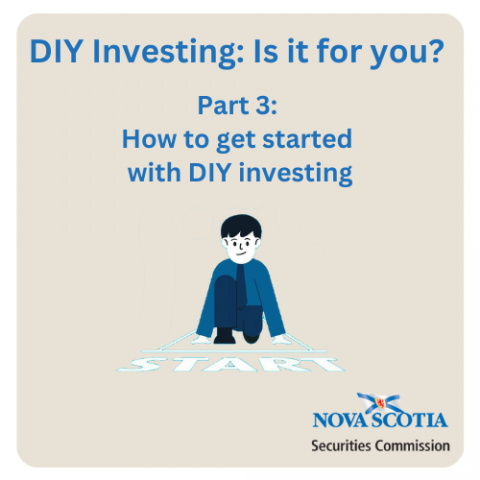Submitted by nsscadmin on

Our series on DIY investing continues with a look at what options you might face when getting started.
The first step in getting started with DIY investing is opening a self-directed investment account. This can be done at a financial institution of through an online discount brokerage. When choosing where to open your self-directed account make sure you examine the fees you’ll be paying and the availability of the investment products you are interested in purchasing.
Once you’ve chosen a financial institution or discount brokerage to invest with, you have a choice of what types of accounts to use. There are several registered accounts that are available to Canadian investors that have different purposes and different tax incentives. They include:
Registered Retirement Savings Plan (RRSP)
Registered Education Savings Plan (RESP)
Registered Disability Savings Plan (RDSP)
Tax Free Savings Account (TFSA)
You can also invest through an unregistered account which has no limitations on investment amounts like you’ll find in registered accounts, however, they lack the tax incentives.
When choosing what type of accounts to open you’ll want to consult your financial plan which is the next step in diving in to DIY Investing. Here are some of the things you should think about and determine when creating your financial plan:
What are your financial goals? – This includes short-term (six months to five years), medium-term (5-10 years), and long-term financial goals (10 years or more).
What is your budget for investing? – Make sure you don’t overinvest and cause yourself financial hardship. Assess how much you need to cover you living costs such as housing, transportation, food, etc., to determine how much you can safely invest.
What is your investing strategy? – Research your risk tolerance, financial situation and the relevant investments that fit them and your financial goals.
Try to be a consistent investor – Making investing a habit can make it easier to sustain and keep you on the right path to reach your goals.
Create an emergency fund – Having money immediately available for emergencies and unexpected expenses can make it easier to stick to your investing plan when you suddenly need to pay for an unplanned car or house repair.
Examine your debt – Unpaid debt can grow and negate the gains you’re making with your investments.
We’ve looked at several types of investment products in previous blog posts. Here is a look at some of the investments that may be available to you as DIY investors. Learn about these investments and determine which are the best fit for your investment goals.
Low risk:
Bonds
Debentures
Guaranteed Investment Certificates (GICs)
Medium to High risk:
Equities
Mutual Funds
Exchange-traded Funds (ETFs)
High Risk:
Alternative Investments
Crypto Assets
Next week we’ll continue our look at DIY investing by examining some of the fundamentals of stock picking.
